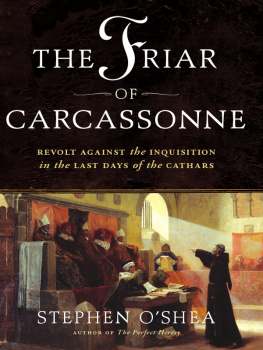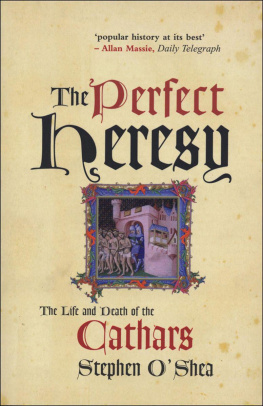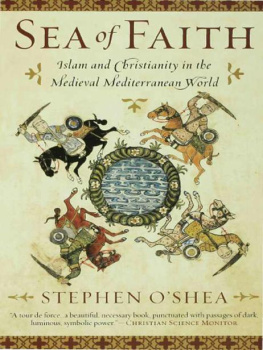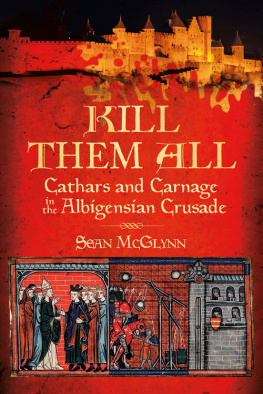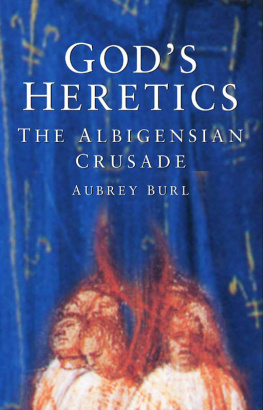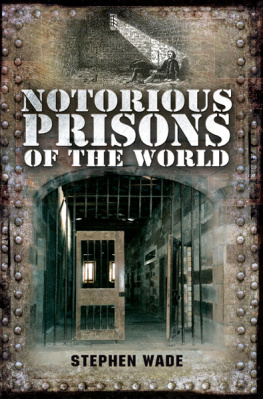The Friar of Carcassonne
BY THE SAME AUTHOR
Back to the Front
The Perfect Heresy
Sea of Faith
The Friar of
Carcassonne

REVOLT AGAINST THE INQUISITION
IN THE LAST DAYS OF THE CATHARS

STEPHEN OSHEA
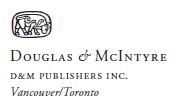
Copyright 2011 by Stephen OShea
All rights reserved. No part of this book may be reproduced, stored in a retrieval system, or transmitted, in any form or by any means, without the prior written consent of the publisher or a license from The Canadian Copyright Licensing Agency (Access Copyright). For a copyright license, visit www.accesscopyright.ca or call toll free to 1-800-893-5777.
Douglas & McIntyre
An imprint of D&M Publishers Inc.
2323 Quebec Street, Suite 201
Vancouver BC Canada V5T 4S7
www.douglas-mcintyre.com
Published in the United States of America by
Walker Publishing Company, Inc.,
a Division of Bloomsbury Publishing
Published in the United Kingdom by Profile Books Limited
Cataloguing data available from Library and Archives Canada
ISBN 978-1-55365-551-0 (cloth)
ISBN 978-1-55365-971-6 (ebook)
Design by Simon Sullivan
Jacket design by John Candell
Jacket illustration: The Albigensian Inquisition. The Agitator of Languedoc
Bernard Dlicieux (12601318), a Franciscan Monk, during his trial, by Jean-Paul Laurens (18381921). Scala/White Images/Art Resource, NY
Maps by Jeffrey L. Ward
Douglas & McIntyre gratefully acknowledges the financial support of the Canada Council for the Arts, the British Columbia Arts Council, the Province of British Columbia through the Book Publishing Tax Credit, and the Government of Canada through the Canada Book Fund for our publishing activities.
To Kevin and Donal OShea,
brothers, not friars
CONTENTS

READERS FAMILIAR WITH THE PERIOD will note immediately that the word inquisition appears throughout uncapitalized. The use of the uppercase Inquisition, common until recently even in scholarly studies, leaves the impression that there was a well-oiled, centralized bureaucracy supporting the inquisitors, whereas in the early centuries of inquisition this was not the case. The inquisition as an institution did not exist, only inquisitors in limited jurisdictions for limited time periods. However, the idea of an institution certainly existed and its ephemeral manifestation in these years was often referred to as the Holy Office, an uppercase usage retained in the text.
As for the vexed problem of names, I have made the usual stab at exception-riddled standardization that, I know from experience, falls short of being universally pleasing. As is customary, the names of monarchs and popes have been given in English. The exception is the king of Majorca, whose Catalan identity I wished to stress; thus Jaume, not James. The same stress on identity has led me to retain the Occitan names for the men of the south. The tension between the Occitan-speaking southerners of Languedoc and the French-speaking northerners of the Kingdom of France is central to the story. Using a historical figures Occitan name locates his background and his allegiances. Thus, for example, Peire Autier, not Pierre Authier. However, for those southerners already widely known by their Gallicized namesBernard Saisset, Pierre Jean Olivi, and Guillaume de Nogaret, for exampleI have retained the French so that readers who know something of these figures will not think they are reading about someone else.
Complicating matters is the problem that much of my research involved French-language material, whose authors almost always use French names for everyone in history. Where an obscure Occitan figure appears only in French, I have not attempted the foolhardy task of reconstituting his name in his mother tongue. But I hope enough of the Occitan-French divide is left standing to shape the readers view of Bernard Dlicieuxs Languedoc.
As for the names themselves, I am acutely aware of their unfamiliarity and sheer number. Having been chided for a phone-book-like embarrassment of names in a previous work, I have tried to trim as many distracting names from the narrative as possible. Thus, unimportant figures who crop up but once or twice in the narrative are identified by name in the notes, not in the main text.
A friend, after having finished reading my earlier work on the Cathars, The Perfect Heresy, exclaimed to me: I get it! Everyone in the first half of the book is called Raymond, and everyone in the second half is called Bernard! As this present work deals with the latter half of the Cathar story, there are indeed a lot of Bernards. I have taken special care to keep them from bumping into each other, but the reader will have to be the judge of whether I succeeded.
Figures of exceptional importance in the story of Bernard Dlicieux aremarked with an asterisk.
ANGELO CLARENO (12471337). Franciscan. Leader of the Spirituals. Exiled at various times to Armenia, Greece, and remote Italian provinces. Argued for the Spirituals at the Council of Vienne (131112). Witness to Bernard Dlicieuxs arrest in Avignon in 1317.
*ARNAUD GARSIE. Wealthy lawyer. Consul of Albi in 1302 and 1303. Of a heretical family. Ally of Bernard Dlicieux. Attended audience at Senlis in 1301, disputation at Toulouse in 1304. Testified against Dlicieux in 1319. Imprisoned in 1319, bought his freedom from the Wall in 1325.
ARNAUD DE VILANOVA (12351311). Prominent Catalan physician, alchemist, oenologist, scientist, and Arabist. Translator of Avicenna and Galen. Friend of Bernard Dlicieux. Supporter of the Spiritual Franciscans. Suspected, along with Dlicieux, of using black magic to kill Pope Benedict XI in 1304.
*BENEDICT XI. Pope. Born Niccol Boccasini in Treviso in 1240. Pontificate 13034. Dominican scholar. Called for arrest of Bernard Dlicieux. Pressured by Nogaret to annul anti-French bulls of his predecessor (Boniface VIII). Imprisoned Arnaud de Vilanova. Sudden death a source of suspicion.
*BERNARD DE CASTANET. Bishop of Albi from 1276 to 1308 (d. 1317). Fearless autocrat. Sponsor of inquisition. Builder of the Cathedral of Ste. Ccile. As cardinal at the Avignon curia, drew up charges against Bernard Dlicieux in 1317.
*BERNARD DLICIEUX (circa 12651320). Franciscan. The Friar of Carcassonne.
*BERNARD GUI (12611331). Dominican. Prolific memoirist of the unrest in Languedoc. Inquisitor at Toulouse from 1307 to 1324. Author of influential inquisitors manual. Drew up the second, more exhaustive list of charges against Bernard Dlicieux for the trial of 1319 in Carcassonne. Strong advocate for the canonization of Thomas Aquinas, which came to pass in 1324.
*BERNARD SAISSET. Bishop of Pamiers from 1295 to his death in 1314. Arrested in 1301 for sedition by royal agents Jean de Picquigny and Richard Leneveu. Temporary incarceration led to royal-papal dispute culminating in the Outrage of Anagni. Found shelter in Rome, then reassigned to Pamiers.
*BONIFACE VIII. Pope. Born Benedetto Caetani in Anagni circa 1235. Pontificate 12941303. Imperious pope of the Jubilee. Acceded to the papacy after counseling his predecessor (Celestine) to abdicate and then imprisoning him. Hated for this reason by the Spiritual Franciscans. Abrasive, brilliant believer in a maximalist monarchical papacy. Engaged in furious fight with Philip the Fair over jurisdiction that culminated in the Outrage of Anagni in 1303. Vilified by Guillaume de Nogaret, who called for him to be posthumously tried.
Next page
